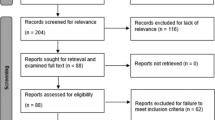Abstract
Early-onset scoliosis (EOS) is defined by the presence of spinal deformity in children 10 years of age or younger. Left untreated, patients with EOS are at high risk for thoracic insufficiency and early demise. This article provides a critical review of a recent prospective cohort study of children with EOS: “Graduation Protocol After Growing-Rod Treatment: Removal of Implants without New Instrumentation Is Not a Realistic Approach,” by Kocyigit and colleagues (J Bone Joint Surg Am. 2017;99(18):1554–1564). Treatment for EOS requires deformity correction while accommodating the growing spine. Dual growing rod implantation is a well-described technique that consists of the placement of two telescoping rods anchored to vertebrae proximal and distal to the apex of the curve. Multiple lengthening procedures are then performed as the child grows. Management of the endpoint of growing rod treatment remains controversial, with high complication rates associated with final fusion. As an alternative to final fusion or implant retention, Kocyigit and colleagues examined the removal of growing rods without spinal fusion and found that this procedure resulted in substantial worsening of the deformity in nine out of ten patients. This treatment group was terminated on ethical grounds. We believe this important result demonstrates that the removal of implants without fusion is an unacceptable treatment strategy that leads to poor outcomes.
Similar content being viewed by others
References
Akbarnia BA, Marks DS, Boachie-Adjei O, Thompson AG, Asher MA. Dual growing rod technique for the treatment of progressive early-onset scoliosis: a multicenter study. Spine. 2005;30(17S):S46–S57.
Akbarnia BA, Breakwell LM, Marks DS, et al. Dual growing rod technique followed for three to eleven years until final fusion: the effect of frequency of lengthening. Spine. 2008;33(9):984–990.
Andras LM, Joiner ERA, McCarthy RE, et al. Growing rods versus shilla growth guidance: better cobb angle correction and T1–S1 length increase but more surgeries. Spine Deform. 2015;3(3):246–252.
Bess S, Akbarnia BA, Thompson GH, et al. Complications of growing-rod treatment for early-onset scoliosis: analysis of one hundred and forty patients. J Bone Joint Surg Am. 2010;92(15):2533–2543.
Cahill PJ, Marvil S, Cuddihy L, et al. Autofusion in the immature spine treated with growing rods. Spine (Phila Pa 1976). 2010;35(22):E1199–1203.
Choudhury MZB, Tsirikos AI, Marks DS. Early-onset scoliosis: clinical presentation, assessment and treatment options. Orthop Trauma. 2017;31(6):357–363.
Dobbs MB, Weinstein SL. Infantile and juvenile scoliosis. Orthop Clin North Am. 1999;30(3):331–341.
Flynn JM, Tomlinson LA, Pawelek J, Thompson GH, McCarthy R, Akbarnia BA. Growing-rod graduates: lessons learned from ninety-nine patients who completed lengthening. J Bone Joint Surg Am. 2013;95(19):1745–1750.
Gillingham BL, Fan RA, Akbarnia BA. Early onset idiopathic scoliosis. J Am Acad Orthop Surg. 2006;14(2):101–112.
Gomez JA, Lee JK, Kim PD, Roye DP, Vitale MG. “Growth friendly” spine surgery: management options for the young child with scoliosis. J Am Acad Orthop Surg. 2011;19(12):722–727.
Jain A, Sponseller PD, Flynn JM, et al. Avoidance of “final” surgical fusion after growing-rod treatment for early-onset scoliosis. J Bone Joint Surg Am. 2016;98(13):1073–1078.
Kocyigit IA, Olgun ZD, Demirkiran HG, Ayvaz M, Yazici M. Graduation protocol after growing-rod treatment: removal of implants without new instrumentation is not a realistic approach. J Bone Joint Surg Am. 2017;99(18):1554–1564.
Lenke LG. Long-term effects of instrumented fusion in growing children. In: Akbarnia BA, Yazici M, Thompson GH, editors. The Growing Spine: Management of Spinal Disorders in Young Children. Berlin: Springer; 2016. p. 535–545.
McCarthy RE, Luhmann S, Lenke L, McCullough FL. The Shilla growth guidance technique for early-onset spinal deformities at 2-year follow-up: a preliminary report. J Pediatr Orthop. 2014;34(1):1–7.
Mehta M. Growth as a corrective force in the early treatment of progressive infantile scoliosis. Bone Joint J. 2005;87(9):1237–1247.
Poe-Kochert C, Shannon C, Pawelek JB, et al. Final fusion after growing-rod treatment for early onset scoliosis: is it really final? J Bone Joint Surg Am. 2016;98(22):1913–1917.
Sanders JO. Casting for early onset scoliosis. In: Akbarnia BA, Yazici M, Thompson GH, editors. The Growing Spine: Management of Spinal Disorders in Young Children. Berlin: Springer; 2016. p. 529–536.
Skaggs DL, Guillaume T, El-Hawary R, Emans J, Mendelow M, Smith J. Early onset scoliosis consensus statement: SRS Growing Spine Committee, 2015. Spine Deform. 2015;3(2):107.
Yang S, Andras LM, Redding GJ, Skaggs DL. Early-onset scoliosis: a review of history, current treatment, and future directions. Pediatrics. 2016;137(1):e20150709.
Author information
Authors and Affiliations
Corresponding author
Ethics declarations
Conflict of Interest
Tony S. Shen, MD, William Schairer, MD, and Roger Widmann, MD, declare that they have no conflicts of interest.
Human/Animal Rights
N/A
Informed Consent
N/A
Required Author Forms
Disclosure forms provided by the authors are available with the online version of this article.
Additional information
Publisher’s Note
Springer Nature remains neutral with regard to jurisdictional claims in published maps and institutional affiliations.
Rights and permissions
About this article
Cite this article
Shen, T.S., Schairer, W. & Widmann, R. In Patients with Early-Onset Scoliosis, Can Growing Rods Be Removed Without Further Instrumentation? An Evidenced-Based Review. HSS Jrnl 15, 201–204 (2019). https://doi.org/10.1007/s11420-019-09671-5
Received:
Accepted:
Published:
Issue Date:
DOI: https://doi.org/10.1007/s11420-019-09671-5




